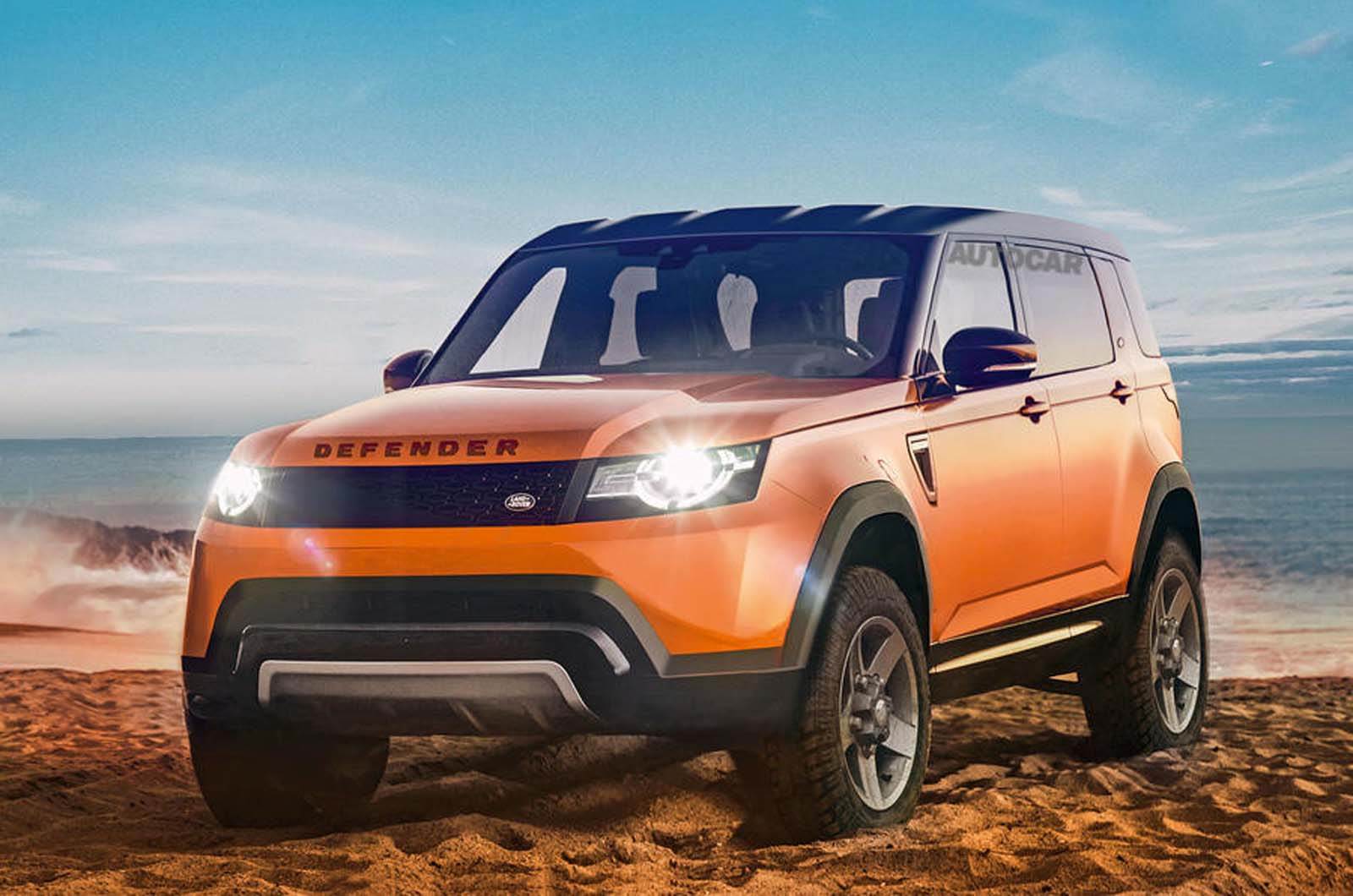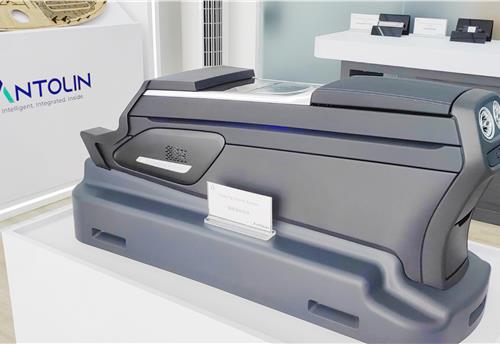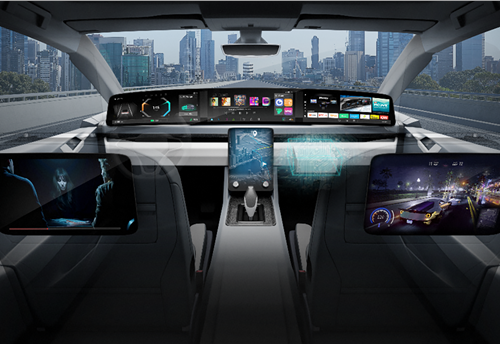Baby SUVs to spearhead new Land Rover offensive
The first of Land Rover's compact SUV models could arrive in 2021, which would revive the spirit of the original Freelander.
Land Rover is readying a raft of new models over the next four years that will take it into new sectors and will culminate in the launch of a model that revives the spirit of the original Freelander.
The diverse new cars, which also include a £250,000 (Rs 2.3 crore) Range Rover coupé, a Defender pick-up truck and a more car-like Range Rover, will cash in on the booming growth of premium 4x4s, with the aim of elevating Land Rover sales and profits to new heights.
Most crucial to the growth targets are new entry-level models. Inspiring these plans is the success of the original Freelander, which invented the idea of a soft-roader when it was launched in 1997 and became a best-seller in Europe.
Land Rover is keen to do this again, this time with models that are even smaller than the Freelander Mk1.
 The first of these small models, which will be around 4.2 metres in length, could arrive in 2021, although debate is ongoing about which of Land Rover’s three model strands – leisure (as typified by the Discovery Sport), luxury (Range Rover) or utility (the next Defender) – it will join. The company is considering adding a baby SUV for each of these ranges in the long term.
The first of these small models, which will be around 4.2 metres in length, could arrive in 2021, although debate is ongoing about which of Land Rover’s three model strands – leisure (as typified by the Discovery Sport), luxury (Range Rover) or utility (the next Defender) – it will join. The company is considering adding a baby SUV for each of these ranges in the long term.
It has been observed that a smaller vehicle to sit below the Discovery Sport in the ‘leisure’ range has the greatest appeal within Land Rover, particularly as it would fill an obvious gap in the company’s line-up and would compete in a segment where it has plenty of history with the Freelander. When the Discovery Sport replaced the Freelander in 2014, the model grew in size and went more upmarket, leaving space in the range for an affordable offering beneath it.
At the time, Land Rover officials told Autocar (UK) that the Freelander name had not necessarily been permanently retired. The badge could be ripe for a return on the new small SUV, although Land Rover is wary of adding yet another model name to its range at a time when only the Range Rover strand of its line-up has been firmly established globally, through fears that it could confuse potential buyers.
Worldwide sales of compact SUVs hit 4.92 million in 2016, up 28% from the previous year, according to market analyst Jato. It is one of the fastest-growing segments of the car market, and one in which it is important for Land Rover to have a presence, not only to grow overall sales but also to introduce younger, less affluent buyers to the brand in the hope that they can be retained and buy more expensive models as their families and salaries grow.
Land Rover Defender pick-up to rival Mercedes X-Class
Audi pursues a similar strategy with its ‘Q’ range, starting with the Q2, and the latter will be a notable rival for the baby Land Rover. Other rivals will be the Jeep Renegade and the Mini Countryman. The Q2 is now Audi’s biggest-selling SUV in Europe, having overtaken the Q5, proving how worthwhile a presence in this sector would be for Land Rover.
 Land Rover’s baby SUVs were previously reported in December 2014, when prototypes were under review in internal product meetings. The plans are progressing again, having been shelved and revived at least twice in the past due to concerns over the profit margins of small cars. These concerns haven’t gone away for Land Rover, but it is buoyed by the continued growth of the segment, and the success of the Q2 in particular, although the small SUV has yet to receive final sign-off from the company’s top brass.
Land Rover’s baby SUVs were previously reported in December 2014, when prototypes were under review in internal product meetings. The plans are progressing again, having been shelved and revived at least twice in the past due to concerns over the profit margins of small cars. These concerns haven’t gone away for Land Rover, but it is buoyed by the continued growth of the segment, and the success of the Q2 in particular, although the small SUV has yet to receive final sign-off from the company’s top brass.
Another potential model in the range could be a small Range Rover, which Land Rover would expect to either match or outstrip the sales success of the Evoque. Currently, the latter accounts for about one in four Land Rover models sold. The manufacturer has traditionally used Range Rover to spearhead its move into new market segments and will do so again in 2019 with a more car-like electric crossover model that will be twinned with the next Jaguar XJ.
Counting against a baby Range Rover is the first small JaguarLand Rover (JLR) product to market, however, is concern that the car’s price and positioning could lead to it eating into Evoque sales, and thus it’s considered the least likely to make production initially.
A compact Defender is said to be the favourite among some company bosses to make production first. That’s because Land Rover has long talked about building a family of Defenders – although the first Defender models will be spun off an entirely different platform to the one proposed for use under the small Land Rovers and Range Rovers.
Whether Land Rover ends up with one, two or three small models in its line-ups, each will likely be based on a smaller platform, understood to be codenamed ‘D10’.
This is a slightly shortened, re-engineered and cheaper version of the D8 architecture on which the Discovery Sport, Range Rover Evoque and Jaguar E-Pace are built.
Given the entry-level positioning of the new models, it is crucial for Land Rover to adopt an existing platform, rather than build a costly bespoke architecture, in order to keep costs down and justify the business case.
If the Defender version of the new small SUV was given the go-ahead, it would mean that the car’s range would use two platforms: a toughened-up version of the D7u – also used under the Range Rover, Range Rover Sport and Discovery – for the initial Defender range due to be revealed later this year and the D10 underpinnings for the smaller car.
The Land Rovers will most likely be made at the firm’s new plant in Slovakia, which will also start building the Discovery later this year. The JLR plants in the UK are close to full capacity and the company will want to keep production in Europe, given that this is where most of its baby SUVs would be sold. Slovakia has significantly lower labour rates than the UK, helping to keep costs down. Having smaller, lighter and more efficient cars in the model range will also contribute to a significant reduction in Land Rover’s overall fleet CO2 emissions, something that is fundamental to meet strict future environmental targets.
The company will need to address the demand for electrified powertrains in smaller model segments by the time the baby Land Rovers reach the market. However, the D8 architecture cannot easily accommodate electrified powertrains, so the D10 platform will need to be re-engineered to achieve this, adding unwanted costs.
Addressing this remains one of the other key factors in determining how quickly Land Rover can bring any of its new compact models to market.
RELATED ARTICLES
Antolin unveils sustainable tech solutions at Beijing Motor Show
In line with its China market roadmap, Antolin is showcasing its latest advances in lighting, HMI, electronics, and sust...
Visteon wins $1.4 billion in new business in Q1 2024, launches 26 new products
Digitisation of vehicle cockpit megatrend is a key growth driver for Visteon with over $400 million of displays wins; Vi...
BMW uses Catena-X ecosystem using real-world CO2 data to enhance quality
Working together with partners and suppliers, the company has modelled a complete data chain for the first time using re...





 20 Apr 2018
20 Apr 2018
 14835 Views
14835 Views





 Autocar Pro News Desk
Autocar Pro News Desk




